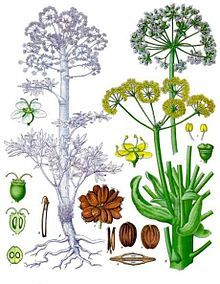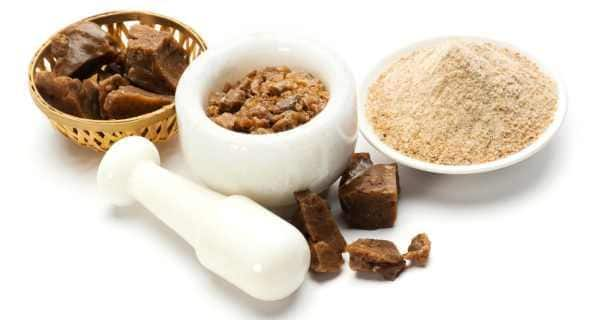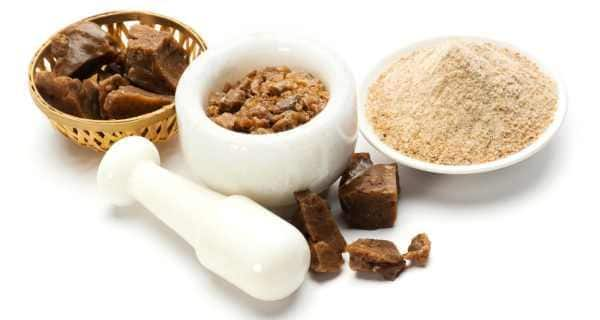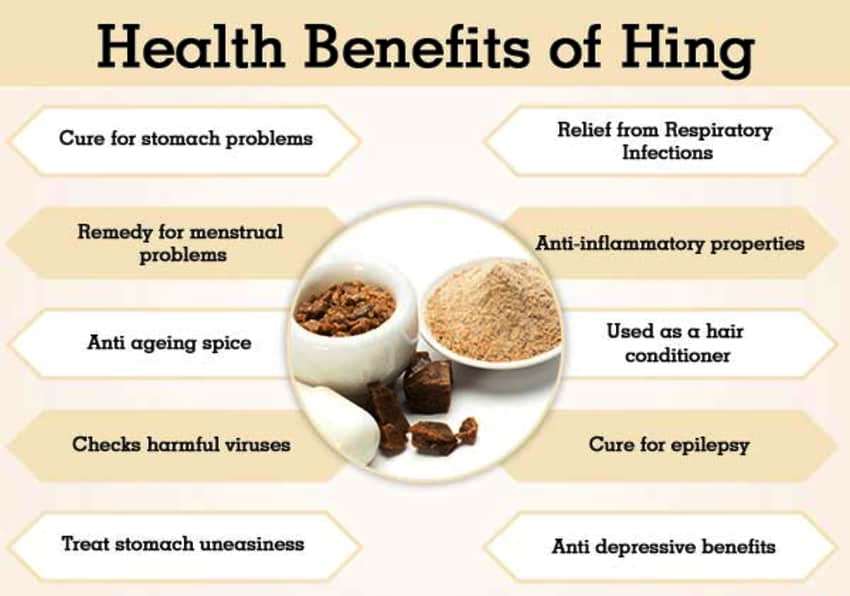Hing:-The mysterious spices
What is Hing(Asafoetida)?
Hing is a dark brown, resin-like dried latex gum or substance that is derived or obtain from mainly living rootstocks or tap roots of several species of ferula plant which is a perennial herb mainly related to celery, parsley and carrots etc. it looks like a giant fennel plant and mainly grown in India but it also grow in country like Iran and Afghanistan. Ferula is a latin words which means ‘carrier’ or ‘vehicle’.

Pic source-Greek medicine
Hing is scientifically called “Asafoetida” and referred as Food of the gods or devils dung. asafoetida gets its name from Persian aza for ‘resin’ and Latin foetidus for ‘stinking.’ Pronounced as ‘asa-fur-tee-da,’ it is a resin-like gum, which is greyish white when fresh but darkens with age (also, when dried) to yellow, red and, eventually, brown. In India, asafoetida is know as Hing, which was derived from the Sanskrit word “han”, meaning “kill”—or deadly uncooked smell.
Asafoetida has a bad smell and tastes bitter. That probably explains why it is sometimes called “devil’s dung.”
Hing is in the form of dried latex gum, which is discharged from the herb called Rhizome or Ferula of several tap roots.

Pic source-Healtline
What does Rhizome or Ferula of tap roots means
A rhizome (also known as rootstocks) is a type of plant stem situated either at the soil surface or underground that contains nodes from which roots and shoots originate. The primary function of the rhizome is the storage of nutrients, including carbohydrates and proteins, until the plant requires them for the growth of new shoots
Common name of Hing;-
It is knows as Asafoetida in English, Vagharni in Sindhi, Hing in Hindi, Marathi, Punjabi & Gujrati, Yang-sap in Kashmiri, Kayam in Malayalam, Perungaayam in Tamil, Hengu in Oriya, Inguva in Telgu, Badika in Sanskrit, Angustha-gandha in Persian, Tyib in Arabic etc.
A brief history of asafoetida; –
Hing is said to have originated in Rome. It emerged into Europe from an expedition of Alexander the Great, who, after returning from a trip to northeastern ancient Persia, thought they had found a plant almost identical to the famed silphium of Cyrene in North Africa—though less tasty. After the fall of roman empire in 16th century, asafoetida use becomes very rare in Europe and sometimes used as a medicine. The asafoetida plant is mainly grown in the cold and arid region of Afghanistan, Turkmenistan, Baluchistan, Iran & Iraq etc.Asafoetida was familiar in the early Mediterranean, having come by land across Iran. Though it is generally forgotten now in Europe, it is still widely used in India.
Cultivation of asafoetida in India:-
Hing was first brought to India in the 16th century by Mughals .Hing is one of the best plant spices to be cultivated in sub Himalayan region of Northern part of India especially in the state like Jammu & Kashmir, Himachal Pradesh, Uttrakhand & some part of Punjab etc. Gulmarg region of Kashmir mainly famous of the cultivation of hing plant The major supply of asafoetida to India is from Afghanistan and Iran. There are two main varieties of asafoetida
All over Iran and India, people who do not prefer to eat onion and garlic, make asafoetida an essential ingredient of their cuisine. Being a unique blend of the finest ingredients, Indian asafoetida from Kashmir enjoys an exalted position in the international market. In South India, asafoetida is very popular. The sambar powder frequently contains asafoetida as flavour enhancer.
How Hing is extracted from the tap roots of ferula plant:-
The plants bear large, carrot-shaped roots, 10–15 cm in diameter at the crown after 4–5 years of growth. At the time of flowering, the upper part of the root is laid bare, and the stem is cut off close to the crown and the milky juice comes out from the cut surface of the plant is scrapped off. A traditional dome shape structure is prepared with twigs and stones is prepared to cover up the cut exposed surface of the plant from where milky juice is coming out to protect it from direct sun light. The milk juice obtained from the root becomes a brown, resin-like mass after drying. The substance hardens when exposed to air. Asafoetida is processed and marketed either as lumps or in powdered form.


Pic source-oaji.net
The collection of the resin and the slicing of the root are repeated until exudation ceases. The resin is greyish-white when fresh, but dries to a dark amber colour. The asafoetida resin is difficult to grate and is traditionally crushed between stones or with a hammer. A single ferula plant can yield close to 500gms of sap.
Asafoetida contains mainly resin (40–64%), gum (25%), and volatile oil (10–17% on a dry-weight basis) and 1.5–10% ash.
The major supply of asafoetida to India is from Afghanistan and Iran.
What is Raw Hing or pure Hing. can it be used directly in food?
Raw Hing is unpalatable in its purest form because of its pungent odour and stinging flavour, due to this high concentration, pure form of asafoetida is not used in cooking. The major supply of asafoetida to India is from Afghanistan and Iran.
There are two type of raw hing:-
- Hing kabuli sufaid (Milky white asafoetida)
- Hing Lal (Red asafoetida)


Pic of Raw Hing (Pic sourse-Indiamart)
Since raw asafoetida is molten in form, acrid and bitter in taste and emits a strong disagreeable pungent odour due to the presence of sulfur compounds therein. Milky white asafetida is water-soluble on another hand Red asafetida is oil soluble. Pure or Raw asafoetida is not used directly in food as it has very strong smell and flavour, therefore, it needs to be processed into compound asafoetida.
What is Compound hing and how it is processed from Raw or pure Hing?
The raw Hing is usually imported from Iran & Afghanistan for making into compound hing which is highly demandable in india & used extensively in Indian cooking as well as medicinal use.
compound asafoetida is obtain from Raw Hing or Pure Hing after mixing it with starch (wheat flour) & edible gum to create an emulsified products called compound hing and it is available in the form of lumps or powder form in market. The trading form is either the pure resin or so-called compounded asafetida which is a fine powder consisting to more than 50% of rice flour and gum arabic to prevent lumping. The advantage of the compounded form is that is easier to dose.
Example of compound hing and its powdered form:-

Pic source-thehealthsite.com
It is obtained in the molten form and later processed, as hing in its raw form may be detrimental to consume. Different varieties of asafoetida are mixed, depending upon their unique aromas. They are then mixed with flour (maida) and edible gum to create an emulsified product. This is later processed and made available in the form of lumps or powder.
Different varieties of asafoetida are mixed, depending upon their unique aromas. They are then mixed with flour (maida) and edible gum to create an emulsified product. This is later processed and made available in the form of lumps or powder.
The quality of asafoetida depends on its volatile oil content, which provides a characteristic odor. A simple method is also available to determine the flavor strength in asafoetida.
There is a good demand for quality compounded asafoetida in the domestic as well as in the export market. The major importers are the UK, Yemen, Belgium, Kenya, Malaysia, Oman, Switzerland, the United Arab Emirates, and other countries.
Today, compound hing are available in three forms — powder, solid, and granular forms — with the price varying from Rs 16 to Rs 75 per 100 gm.
What is so intriguing about this spice is that it is extremely pungent when raw, but as soon as it is cooked in fat, it becomes subtle and aromatic.
Chemical Constituents in Hing
The volatile oil is the main active constituent of the Hing, which is responsible for its therapeutic significance. Its main phyto-chemical is FERULIC ACID. It varies from 40 to 60% in Heeng gum. The Ferulic acid has Anti-cancer, Anti-inflammatory, Anti-mutagenic, antineoplastic, Anti-tumor, Antiviral, Anti-bacterial, Anti-spasmodic, Hepato-protective, Antioxidant properties.

Pic source-Ayurtimes
Characteristic flavour of Hing:-
Hing has an overwhelming, pungent odour, like that of rotting onions or sulphur. But when Hing is cooked with food items , it imparts an onion-like flavour and dissipate the overwhelming pungent order when cooked . it is Used especially as a digestive aid in food, as a condiment and in pickles. it is best stored in airtight containers to avoid affecting other spices kept nearby. However, its aroma becomes a lot milder and sufficiently pleasant when heated in oil or ghee. In cooked dishes, it delivers a smooth flavour reminiscent of leeks.
In India, asafoetida is largely employed to add a strong onion-garlic flavour to vegetarian dishes and used especially by Brahmins and Jains who do not eat onions or garlic. Suited to many pickles, lentils, fish dishes and to season some papadums, asafoetida is also utilised in many South and West Indian dishes. Indian asafoetida specially from Kashmir region is highly valued in international market.
Hing is a very interesting spice, but it has to be used in the right quantity, even a little bit of more hing can overpowers the whole dish and can makes it just taste bitter.”
Today, compound hing are available in three forms — powder, solid, and granular forms — with the price varying from Rs 16 to Rs 75 per 100 gm.
there are different ways to use Hing to brings out the right flavour in food:-
- The first way of using hing is in its pure form and that is lumps which has a more fresh flavour and is more pungent in smell. It should be used in lesser quantity due to very strong flavour.The lumps are usually crushed into smaller size and put in into warm water or roasting it in hot water for few minutes to bring out the real flavour. It is used in the mid of the cooking process in food.
- The powdered version of hing is added at the end of the cooking. Hing is mostly sold in powdered form. Hing when uncooked is very pungent but gives a very strong flavour in the food.
Use of Hing in Cooking:-

Pic source-thehealthsite.com
- The Hing used in Cooking largely for its digestive properties. It’s added to foods such as curries and beans that are thought to be gaseous or gas-producing in nature to make them easier to digest. According to yogic standards, it is not supposed to be eaten with onion and garlic, which they say can lead to lethargy.
- The food containing hing does not easily gets contaminated that is the reason it is highly used in the preparation of pickles for flavor and to give shelf life of pickle. Asafoetida is used as a tenderizer and preservative for meat was known centuries ago.
- Hing is a very potent spice. Typically, just a pinch will have a big impact on an entire dish. It should also be added during cooking to reduce its bitterness; don’t sprinkle it on top of the finished food.
- adding this spice to food not only improves overall nutritional value but also provides numerous health benefits.
- It play a critical role in the Indian cooking due to its Umami Taste (besides sweets, salt, sour & bitter). The taste of hing corresponds to the flavour enhancer like ajinomotto or monosodium glutamates in food. In South India, asafoetida is very popular. The sambar powder frequently contains asafoetida as flavour enhancer.
- In India it is widely used in Karnataka, Gujrat & Tamilnadu cuisine which are mainly vegetarian based cuisine and is frequently used to tone sweet, sour, salty and spicy component in food. It is used to flavour the Karnataka saaru, Sambhar, several south Indian vegetarian dishes etc.
- Asafoetida is also used in vegetarian Punjabi food where it enhances the flavor of numerous dishes, where it is quickly heated in hot oil before sprinkling on the food
- Asafoetida is mainly used in Indian Vegetarian cooking in which the strong onion-garlic flavour enhances many dishes, especially those of Brahmin and Jain cuisines where onions and garlic are prohibited. It is used mostly in south and west India, though it does not grow there.
- Tiny amounts give a gentle lift to fish, egg or cheese dishes where onion would be too coarse or bulky. That includes in salads and salad dressings, too.
- Asafoetida is an essential spices in Indian cooking and has a distinctive, sharp, pungent smell and becomes extremely fragrant when added to hot oil or the clarified butter ghee to temper a dish. It is used in every day cooking for making dal or tempering the dal, Vegetable dishes, Sambhar dishes, snacks items like khandvi etc.
- The spice is added to the food at the time of tempering. Sometimes dried and ground asafoetida (in small quantities) can be mixed with salt and eaten with raw salad.
- The main use of Asafoetida is as a favouring condiment. It is also suited to many fish dishes and some pappadums are also seasoned with asafoetida.
- It was a popular spice in Europe since the Roman times and a much preferred spice of the Middle Ages. Iranian cuisine uses it for favoring meat-balls, and in Afghanistan it is used in the preparation of dried meat.
- It was used in ancient Greek and Roman cuisines, especially to flavour barbecued mutton, and continued to be used through the Middle Ages.
- Asafoetida is used in savory dishes, often to add a more full flavor by mimicking the taste of onions, garlic, egg, and even meat. It’s a staple ingredient in Indian cooking, commonly used along with turmeric in lentil dishes like dal, and a variety of vegetable dishes.
Use of Hing in Ayurveda & its health benefit:-
According to ayurveda, it only works in VATA and KAPHA disorders. High blood pressure with high cholesterol is believed to be a KAPHA & VATA nature. It would only work when you have raised cholesterol levels. It helps reducing cholesterol and widens the lumen of blood vessels, which helps in easy flow of blood. Thus, blood pressure is reduced.
In Ayurveda, hing is used to aid digestion, cure colic, and stagnation in the GI tract. Hing burns ama. It is a primary herb for Vata. It is a key ingredient in the formula hingvastak churna, a major digestive formula in Ayurveda.

Hing is a powerful antispasmodic useful in cough, asthma, intestinal colic, and uterine spasms. It nourishes the nervous tissue in case of stagnation with high Vata, sciatica, paralysis, and epilepsy.
Hing treats low libido, impotence, and encourages ovulation and fertility where the uterus is congested from Kapha. Curiously, it has also been used as a contraceptive, perhaps by employing the anthelminthic qualities topically to destroy semen. Hing is abortifascient and should not be used in pregnancy.
Adding Hing to oil while cooking unlocks its medicinal property and one such property is its ‘hypotensive nature’. Individuals who have high blood pressure must add Hing to their food preparations.
Dosage
The dosage of Hing (Hingu) varies from 10 mg to 500 mg.
| Dietary Dosage | 5 mg to 30 mg per day |
| Safest Therapeutic Dosage | 10 mg to 125 mg per day |
Hing Pani
Take 300 ml water and add 50 mg Hing Powder. Boil the water and strain it. Consume this water in three divided dosages i.e. about 100 ml per dosage.
Caution & Side Effects
Hing is LIKELY SAFE in lower amount and amounts found in the foods. The side effects of Hing are heartburn, hyperacidity, diarrhea and headache. In larger amounts, it can have following side effects in some people.
- Heartburn or acidity (very common side effect)
- Headache (common)
- Burping (rare)
- Diarrhea (very rare)
According to ayurveda, Hing has very hot potency, which means it produces heat inside the body after its consumption. It can cause side effects in people sensitive to heat or having symptoms or history of gastritis, burning, heat sensation or bleeding disorders.
Precautions
We should not use Hing in children under age of 5 years. However, it may be safe in food amounts or amount less than 5 mg per day.
Hing can increase the chances of bleeding due to its hot potency. Therefore, you should avoid using it if you are suffering with any type of bleeding disorder.
Preparation and Storage
It is vital to keep asafoetida in airtight containers as its sulfurous odour will effect other foods and spices. It is most commonly available as a powder or granules that can be added directly to the cooking pot. It is also sold in lumps that need to be crushed before using. This is a very powerful spice and even in its ground state lasts well over a year if stored properly, away from light and air.
Popular brand name of compound hing available in Indian market:-
In india the compound hing are sold in various forms such as solid form, semi solid form, granular form & powder form by most of the company. Before buying hing from market, we must check the levelling & agmark/FSSAI Logo on the pkt of the hing. The quality of hing is mainly determined by the following :-
- Moisture content :- As per the FSSAI Standard the moisture content in hing shall not be more than 12 per cent of the mass. The less, the better the hing will be.
- Pungency:- Pungency in compound hing is determined by content of Raw hing into it. As per the standard it should be minimum 5% of raw hing must be present in the compound hing to obtain the standard pungency in compound hing otherwise the compound hing can be outrightly termed substandard quality.
- Today, the most commonly available form is compounded asafoetida, containing 30% asafoetida resin, along with rice flour or maida (white wheat flour) and gum arabic is termed as a bandhyani Hing.
- Compound hing powder are available in Indian market in the pack of 10 gms, 20 gms,50gms,100gms,250gms or even 500gms.
- The average price of Hing are in the range from Rs 400 to 600/-per 100gms of packet depending upon the brand value.
Popular Hing brands in India
- LG Laljee godhoo & co.
- Gopal hing
- MDH Hing
- Catch hing
- Everest hing
- Baby band hing
- Sudhi hing
- Natraj Hing
- Kitchen express hing
- Ramdev Hing
- Mother organic hing
- Tassyam hing
- Urban platter hing
- SSP Hing
- Patanjali hing
- PC Compound hing


